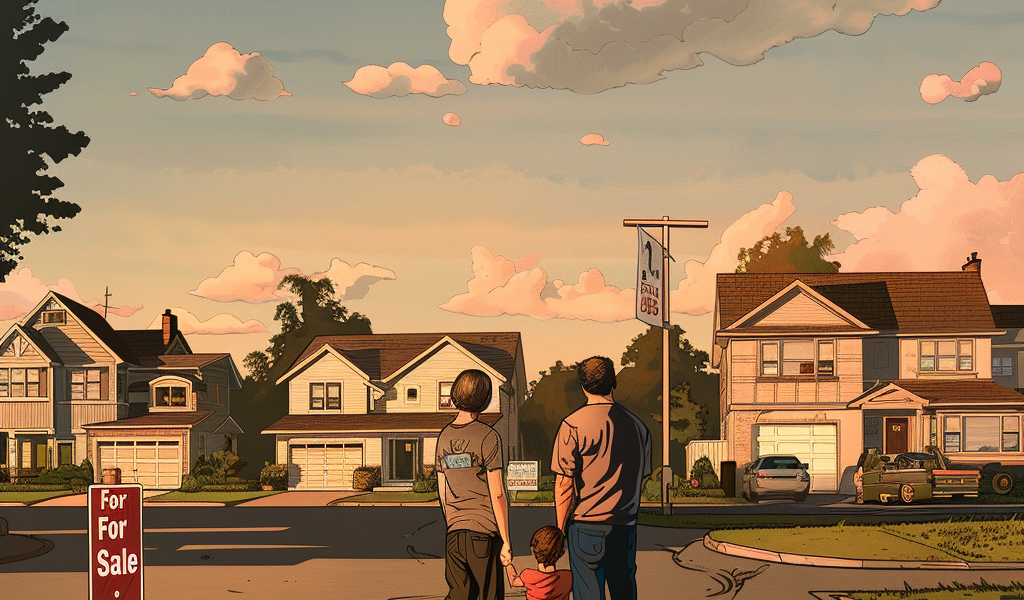In a startling shift in the housing market landscape, recent data reveals that states like Montana and Idaho have overtaken California as the most unaffordable places for homebuyers in the United States. This trend has emerged in the wake of the COVID-19 pandemic, which has dramatically altered the dynamics of housing affordability across the country.
According to an analysis conducted by the National Association of Realtors (NAR), prior to the pandemic, there were 20 states classified as affordable for homebuyers. However, as of this year, that number has plummeted to zero. The once-affordable regions, including key presidential swing states such as Michigan, Pennsylvania, and Wisconsin, have all fallen off the affordability map.
In a striking example of this trend, Sharon Reese, a 43-year-old former resident of Las Vegas, has found herself compelled to return to her hometown of Youngstown, Ohio. After 18 years of living in a city that was once considered affordable, Reese and her family faced the harsh reality of skyrocketing housing prices. “If you don’t have between $600,000 and $800,000, you’re not buying a house out there,” she lamented, reflecting on the challenges of finding suitable housing in Las Vegas.
Reese’s story is not unique. Many families are now becoming housing market refugees, forced to relocate in search of affordable living. Youngstown, along with nearby Akron, stands out as one of the last metropolitan areas in the country where families of varying income levels can still find single-family homes within their financial reach.
As the Reese family settles temporarily with relatives, they are on the lookout for job opportunities and a permanent residence. Their predicament highlights a broader issue that has emerged since the pandemic: a significant disconnect between income levels and home prices across the nation.
The NAR’s analysis assigns affordability scores to states and metropolitan areas on a scale from 0 to 2. A score of 0 indicates that no households can afford any homes on the market, while a score of 1 suggests that homes are affordable to households in proportion to their income. Unfortunately, no state or metropolitan area has achieved a score of 1, with the majority struggling to meet even the most basic affordability standards.
Montana and Idaho have recently claimed the top spots as the least affordable states, surpassing California, which has long been synonymous with high housing costs. Following closely behind are Hawaii and Oregon, rounding out the list of the five most unaffordable states for aspiring homebuyers.
As the housing market continues to evolve, the implications for families seeking stable living conditions are profound. The combination of rising prices and stagnant wages has created a perfect storm, pushing many individuals and families to reconsider their housing options and geographic locations.
In addition to the financial challenges, the emotional toll of relocating and starting anew cannot be understated. Families like the Reeses are navigating not just the logistics of moving but also the uncertainty of job markets and community integration.
With the ongoing changes in the housing market, it remains to be seen how state and local governments will respond to this crisis. Efforts to improve housing affordability will be crucial in addressing the needs of families across the nation. For now, many individuals are left to grapple with the harsh realities of an increasingly unaffordable housing landscape.
As the nation heads into the next chapter of its housing story, the focus will undoubtedly shift to finding solutions that can bridge the widening gap between income and housing costs, ensuring that families can find homes that are both financially viable and conducive to their well-being.





